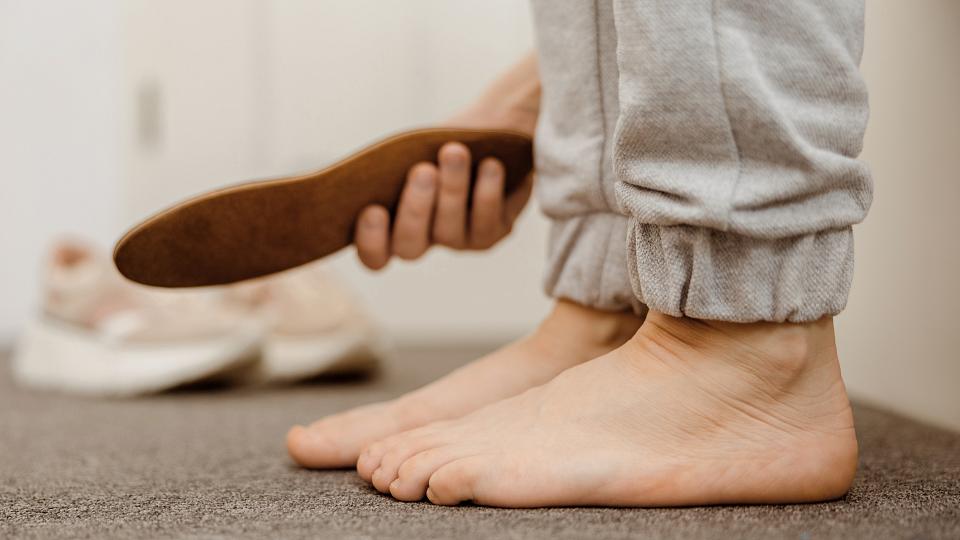
Dr. Jones: Old Chinese foot binding practices to make women hobble on little five-inch, deformed feet. You, five inch high heels for your pretty Christmas dress, awesome. This is Dr. Kirtly Jones from Obstetrics and Gynecology at The University of Utah Health Care and this is, "Women's Feet" on The Scope.
Announcer: Covering all aspects of woman's health this is the Seven Domains of Women's Health with Dr. Kirtly Jones on The Scope.
Dr. Jones: Some years ago, I had the opportunity to visit a museum in Kuala Lumpur entitled, "Enduring Beauty." Wandering through the exhibit, I saw what I thought were tortuous practices of neck elongation, plates put in the lips and ears, Chinese foot binding, and others. The last room in the exhibit was enlightening, 19th-century corsets and contemporary girdles and high heels.
It's a good thing that most millennials have never worn a girdle if you don't count Spanx, but high heels? Over many years of my career as a gynecologist, I have been in a unique position to observe the damage that a life in high heels can do women's feet. Ladies, you know what I mean. Men and woman have been wearing elevated shoes for thousands of years. In ancient Egypt, they might have been a sign of class.
Shoes are made of tougher stuff and are more likely to survive for historical studies so we know about this. Those early elevated shoes were more platforms than heels, though. Men and women wore heels as part of fashion going back to the 1500s when shoes were made of two parts and heels were added. This was popularized by several royal women who weren't very tall who wanted to feel taller than their husband's mistresses.
So a person of social standing and wealth could be called well-heeled. And men may have worn heels as a practical matter to keep their boots in stirrups. Okay. Ao heels have been around for a long time and fashion comes and goes. But very high heels have been back since the late 1980s and '90s and there are consequences.
Recently, a study from the University of Alabama published in the "Journal of Foot and Ankle Injuries" stated, "In the US, emergency rooms treated 123,355 high heel-related injuries between 2002 and 2012." And it had doubled in the past 10 years. More than 19,000 of those injuries occurred in 2011 alone. Sprains and strains to the foot and ankle were the most common and most patients were in their 20s and 30s.
One in five of those accidents resulted in broken bones. And those are just the injuries that took women to the emergency room. Not the ones that hurt but women stayed home. So let's talk about an interesting study of South Korean flight attendants looking at ankle stability in a career spent in high heels. Students at a school for flight attendants, who have to wear heels all day long at school, had their balance tested.
In the first year, their balance was poor. Probably like mine in heels. The second year, the woman had developed significant strength in muscles and tendons that support the ankle side to side, less wobble and had better balance. But by the fourth year, women had worse balance because they lost strength support front to back. Wearing high heels all the time limits the flexion of the foot and ankle.
So what to do? If you wear heels just for special occasions, you aren't likely to do permanent structural damage of your feet and ankles, unless you fall over, which you are more likely to do. So take care. Walk arm-in-arm with your honey. Can you wear those foldable little flats until you get to the occasion while you're walking on the street? Don't catch your stilettos in ventilation grates and put your heels on when you get there.
If you need to wear heels for work, although I cannot see US companies requiring heels as part of business casual, but you want to and you wear them all the time. Take them off when they're under your desk. Flex your feet up and down and stretch your calves gently on the edge of stair steps. This is an exercise called heel lifts and heel drops. Give your feet and ankles a chance to normalize with exercise at night and weekends in bare feet or running shoes that are flat, well-fit, and supportive.
For those of you who can wear high heels gracefully, they do look lovely. So I've been conditioned, like every other American woman, to see beauty in style and high heels. I'm envious of ladies who can carry it off, but be practical even if your shoes aren't. Don't' run, watch for treacherous terrain that can grab your stilettos, and be careful what you drink at a party that might further affect your balance. Stay smart and stay safe.
Announcer: TheScopeRadio.com is University of Utah Health Sciences Radio. If you like what you heard be sure to get our latest content by following us on Facebook. Just click on the Facebook icon at TheScopeRadio.com


